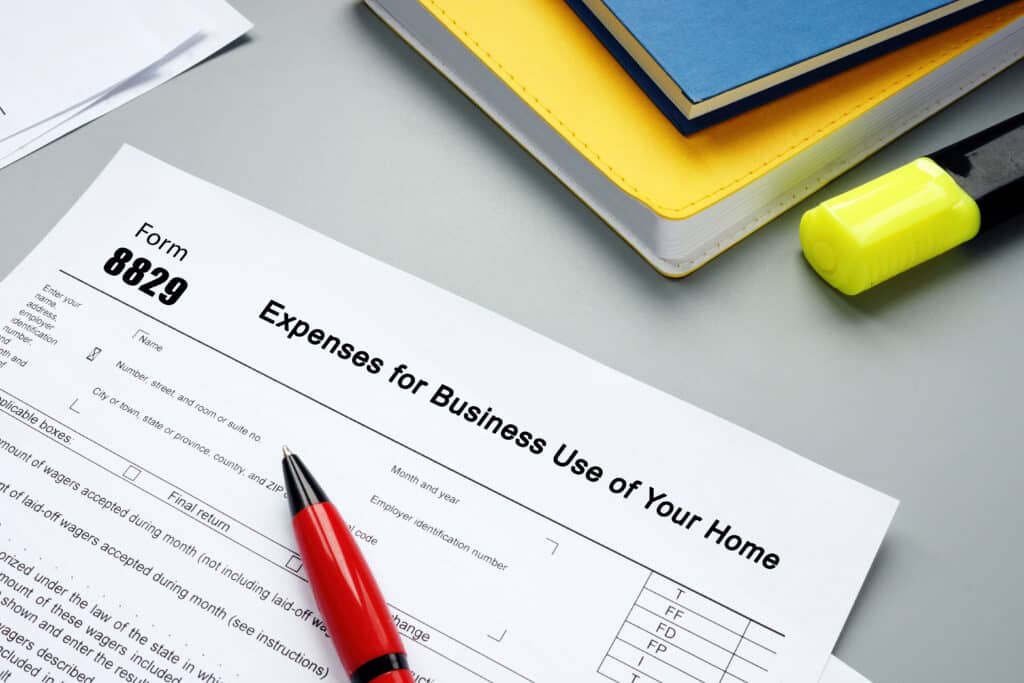How to Unlock Hidden Savings with Form 8829

As a small business owner or self-employed individual, you’re entitled to various deductions that can significantly reduce your tax liability. One such valuable deduction is the Home Office Deduction, which you can claim using IRS Form 8829. In this comprehensive guide, we’ll delve into the details of Form 8829, its purpose, who should use it, and when it should be employed.
What is Form 8829?
Form 8829 (Expenses for Business Use of Your Home) serves as a tax document designed to assist small business owners and self-employed individuals in calculating and declaring the proportion of their home expenses eligible for deduction as business expenses, thereby lowering their overall tax obligation.
Who Can Use Form 8829?
You’re eligible to use the Form 8829 if you meet the following conditions:
- You use part of your home regularly and exclusively for your business or self-employment activities.
- Your home functions as your principal place of business, or you use a separate structure on your property for business purposes.
- You’re not an employee who works from home for the convenience of your employer.
Use Form 8829 if you wish to claim deductions for expenses related to the business use of your home. Keep in mind to maintain accurate records and supporting documentation to substantiate your claims.
What Types of Expenses Are Reportable on Form 8829?
The expenses that you can report on Form 8829 include:
- Direct Expenses: These refer to expenses exclusively related to the business area of your home. For example, if you remodel your home office, those expenses would be considered direct.
- Indirect Expenses: These pertain to expenses that benefit both the business and personal areas of your home, such as mortgage interest, property taxes, and utilities. You must allocate these expenses based on the square footage of your home office relative to your entire home.
File IRS Form 8829 The Right Way
Part I: Identification of Home Office
In Part I of Form 8829, you’ll measure the specific percentage of the portion of your home that you use for business purposes by dividing the square footage of your dedicated business area by the total square footage of your home and multiplying by 100.
Part II: Calculation of Expenses
Part II involves a detailed breakdown of your expenses related to your home office. Categorize your expenses into direct and indirect categories to give a comprehensive overview. Direct expenses are those that solely pertain to your home office, such as painting or repairs specifically done in that space. Indirect expenses, on the other hand, are costs that contribute to your entire home but can be apportioned based on the percentage of your home’s square footage used for business purposes.
Part III: Depreciation
Part III of Form 8829 addresses depreciation expenses related to your home office, especially if you own your home. It’s important to consult IRS guidelines or seek advice from a tax professional when calculating depreciation accurately. Depreciation takes into account the wear and tear your home office space undergoes over time.
Part IV: Carryover of Unallowed Expenses
If your home office deductions exceed your income in the current tax year, Part IV discusses the option to carry over the excess expenses to the following tax year. This is a critical provision for those with fluctuating income or higher expenses in a particular year.
Advice for Avoiding IRS Scrutiny
- Maintain Documentation: If you’re filing Form 8829, you must keep meticulous records of all expenses related to your home office. Receipts, invoices, and documents demonstrating business use will substantiate your claims in case of an audit.
- Ensure Precise Home Office Calculation. It is essential that you measure and calculate the square footage of your home office accurately. This will safeguard you against the risk of potential errors and associated penalties.
Need Assistance?
IRS Form 8829 provides a valuable opportunity for small business owners and self-employed individuals to reduce their tax liability by claiming deductions related to their home office. If you’re unsure about any aspect of claiming the home office deductions or filing Form 8829, contact Peace of Mind Tax Help at 775-245-4357 or email us at help@TaxSamaritan.com. Taking this proactive step not only ensures compliance but also optimizes your deductions.

All About Randall Brody
Randall is the Founder of Tax Samaritan, a boutique firm specializing in the preparation of taxes and the resolution of tax problems for Americans living abroad, as well as the other unique tax issues that apply to taxpayers. Here, they help taxpayers save money on their tax returns.